Unless you’re building a SubSonex jet like editor at large Paul Dye, you’ll eventually have to choose a propeller to mount on your project. As with many facets of aviation, there are compromises to be considered; the perfect propeller for one performance task may not work as well in others. Expanding the range of acceptable compromises is what prop builders and designers are always attempting to do.
At the heart of it, a propeller is a rotating airfoil required to operate at widely varying airspeeds along its length. Its job is to convert the potential horsepower of the engine into effective thrust in the most efficient manner possible. The brothers Wright had researched the theories of lifting devices more thoroughly than just about anyone in their time, so armed with their knowledge, they whittled their own chain-driven propellers for the 1903 Flyer.
Fortunately, we don’t have to do that. There are dozens of propeller makers out there, waiting to supply the exact prop needed to get our projects into the air. You can choose from a list of certified propellers like those on production airplanes, or you can install one of the non-certified propellers made specifically for Experimental/Amateur-Built aircraft, supplied by a builder of certified props. Or you can go with a custom unit from one of the many “boutique” propeller makers that have been building props for homebuilts for years.
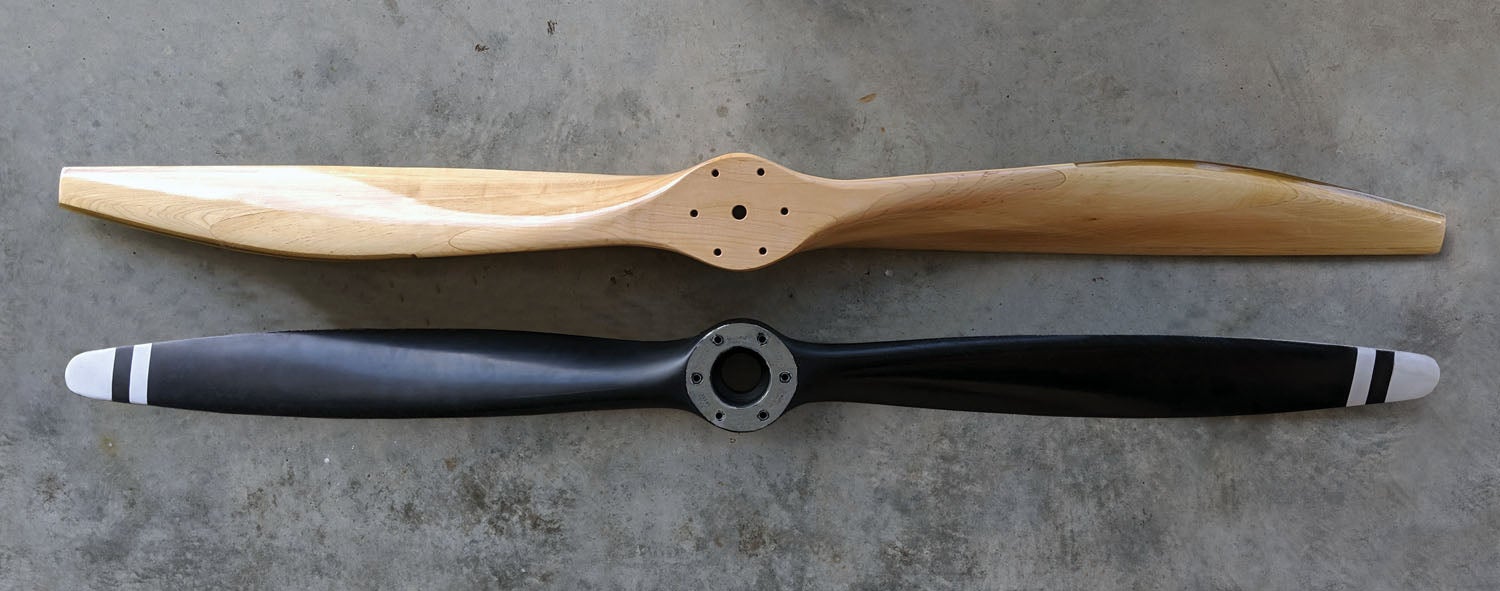
The Art of Thrust
Making propellers continues to be a blend of art and aerodynamic science. Whether formed from aluminum, composite or laminated wood, achieving the absolute best size and shape for a particular propeller installation takes a lot of creative skill as well as knowledge of the underlying principles.
The interlinked dimensions of the propeller’s diameter and effective pitch determine most of the results achieved when a prop is bolted to the engine crankshaft. Advantages stemming from the material used in construction can make up for less-than-perfect proportions; metal props, for instance, can be formed into thinner airfoil shapes than a wood propeller. Wood props, on the other hand, have a natural ability to absorb vibration and they’re cheaper. Composite construction offers extended life and some ability to flex into a different pitch under load.
The type of propeller to be used depends in large part on the kit designer’s weight and power recommendations. A fixed-pitch propeller is, as the name implies, an unchangeable concession between climb performance and cruise speed. A ground-adjustable prop has its blades fitted into a hub that allows rotation to change pitch through a range of options. An in-flight adjustable propeller lets the pilot select a pitch that best suits the phase of flight at the moment, although rpm still rises and falls in response to airspeed and power changes. And the crème de la crème solution is the constant-speed propeller, an in-flight adjustable prop that’s linked to a governor that makes minute pitch adjustments to hold rpm steady after the pilot sets the desired power.
Weight is always a consideration. The lightest propeller is a simple fixed-pitch one, with wood or wood-core composite construction weighing less than aluminum. Constant-speed propellers add considerable weight, often where it isn’t wanted from a center of gravity standpoint, in trade for flexible performance options and reduced workload.
Does blade count matter when pursuing efficiency? Not so much, as careful design can offset the theoretical advantage of fewer blades. Veteran wood/composite propeller maker Craig Catto says, “As for the difference between a two-blade and three-blade propeller, from a performance standpoint the two-blade and three-blade are very similar, almost equivalent. The three-blade propeller is smoother due to its ability to distribute the power pulses from the engine. Weight varies depending on design; a two-blade propeller weighs between 10 and 14 pounds and a three-blade propeller weighs between 11 and 15 pounds. The difference in weight (from using a wood-core prop instead of a metal prop) will provide a noticeable savings in fuel alone.”
Unfortunately, you cannot put just any prop on any engine. Hole patterns must accept the mounting bolts on the engine, pitch and diameter must meet the power rating and airspeed range expected, and some crankshafts won’t accept a constant-speed propeller, most of which need pressurized oil for pitch adjustment. Propeller suppliers know how to work with your engine and aircraft combination.
A Year of Changes
The challenges of 2020’s pandemic scare did not adversely affect most of the propeller makers we spoke with. Early in the year there were some order cancellations that slowed business for a while and overseas shipments were halted briefly as embargoes were put in place, but by and large we were told, “We’re still here, working with proper precautions and shipping product.” We did find that Tennessee Propellers is no longer in business, the owner evidently making good on the retirement he was planning in 2019, and Props, Inc. seems to have closed up shop as well. Also, we were unable to get a response from Kent Tarver at Tarver Propellers, who holds the rights to the venerable Koppers Aeromatic automatically adjusting propeller.
Whichever supplier you choose for your homebuilt, there’s no doubt that a good propeller is essential for the success of your project. Fortunately, there’s a host of reputable companies that can take your dream into full thrust.
Certified Propeller Manufacturers
GT Propellers
Based in Italy, GT Propellers has been around for over 50 years and is best known for its collaboration with Tecnam Aircraft that began in 1992. The company makes fixed-pitch, ground-adjustable and constant-speed props, mostly certified under EASA 21P standards. Wood and composite construction is used, available in 200 model variations.
Most of GT Propeller’s LSA and light airplane propellers are two- and three-blade designs using monolithic carbon technology with a metal leading-edge strip. The GT3G Multi Mission Propeller is an innovative high-performance three-blade ground-adjustable propeller, optimized for maximum efficiency on touring and aerobatic airplanes, as well as STOL aircraft. It can be used with engines ranging in power from 160 to 280 hp.
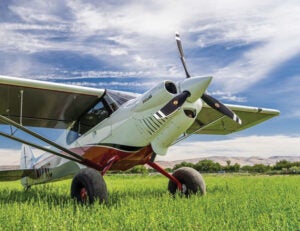
Hartzell Propeller, Inc.
Hartzell Propeller continues to evolve its product line to support the Experimental and homebuilt market. Hartzell manufactures both aluminum and structural composite-blade propellers that are compatible with a wide variety of engines. Hartzell recently added the structural composite three-blade Raptor hub propeller series to its lineup of Experimental aircraft products, providing increased performance with an additional weight savings. Raptor propellers are available for damped-crankshaft Lycoming (I)O-360, IO-390, and (I)O-320 series engines.
The latest product introduced from the Raptor hub propeller series is the structural composite three-blade Pathfinder, optimized for STOL. The Pathfinder is ideal for pilots who value takeoff and climb performance as their top priority. The Pathfinder is available for damped-crank (I)O-360 and (I)O-390 series engines. As a great option for backcountry operation, the 44-pound Pathfinder provides a lightweight three-blade alternative to the two-blade Trailblazer series. The Trailblazer prop is standard equipment on the new nosewheel equipped NXCub from CubCrafters, with the Pathfinder as an option.
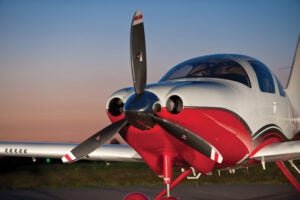
McCauley Propeller Systems
After becoming a wholly owned division of Cessna Aircraft in 1960, McCauley Propellers continues today under the Textron Aviation umbrella. McCauley entered the propeller manufacturing business in 1941, marketing its first forged aluminum propellers in 1946. Constant-speed, feathering and deicing capabilities quickly followed.
With 350,000 propellers in service and 500 models available, McCauley has expanded into composite propellers with its Blackmac Carbon series. The company is headquartered in Wichita, Kansas, and production takes place in Columbus, Georgia.
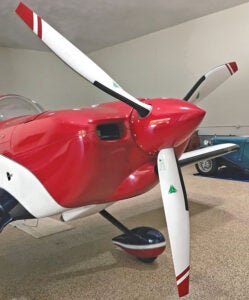 MT-Propeller
MT-Propeller
MT-Propeller provides propellers using its “natural composite” wood-core blades for certified and Experimental installations. Production and company headquarters are located in Germany, but North American support is provided by a Deland, Florida, service center as well as a network of service stations. The majority of MT-Propeller’s product line encompasses constant-speed hydraulic control, offering feathering and reversing features where applicable.
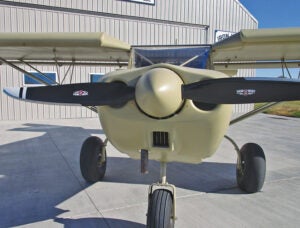
Sensenich Propeller Company
Approaching 80 years in business, Sensenich is one of the few propeller companies providing props built of three basic materials—wood, aluminum and composite. It operates in two separate but co-managed locations, the original headquarters near Lancaster, Pennsylvania, and a facility in Plant City, Florida, where wood and composite propellers are made.
A wide range of propellers for certified, Light Sport and Experimental applications are available from Sensenich, including ground-adjustable composite props for Jabiru, ULPower and Rotax engines. A PowerSweep blade planform is incorporated into the composite propellers. Two- and three-blade units are available for the Lycoming O-320 and O-360 installations in Van’s RV airplanes, and large-diameter propellers are offered for STOL airplanes like the Bearhawk, RANS and Zenith designs. Meanwhile, aluminum propellers are available for typical homebuilts like Van’s and Glasair Experimentals, and traditional wood propellers are furnished in a variety of styles.
Certified Propellers
| Company | Founded | Construction | Horsepower Range |
|---|---|---|---|
| GT Propellers | 1969 | Wood and composite | 30 to 2500 hp |
| +39 0541 69 33 99 | |||
| Hartzell Propeller, Inc. | 1917 | Metal and composite | Up to 2180 hp |
| 800-942-7767 | |||
| McCauley Propeller Systems | 1938 | Metal and composite | 100 to 1200 hp |
| 800-621-7767 | |||
| MT-Propeller USA, Inc. | 1981 | Natural composite | Up to 5000 hp |
| 386-736-7762 | |||
| Sensenich Wood Propeller Co. | 1932 | Wood and composite | 50 to 275 hp |
| 813-752-3711 | |||
| Sensenich Propeller Mfg. Co. Inc. | 1932 | Metal | 65 to 200 hp |
| 717-569-0435 | |||
Non-Certified Propeller Manufacturers
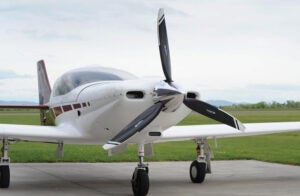
Airmaster Propellers, Ltd.
New Zealand-based Airmaster produces a wide range of hubs for constant-speed, electrically controlled two- and three-blade propellers, using blades from Warp Drive, Kiev, WhirlWind and Sensenich. Their primary focus is on Experimental and ultralight aircraft.
Using the electric controller’s mode selector, the pilot can choose preset settings for takeoff, climb and cruise, after which the controller will maintain a selected rpm. U.S. sales for Airmaster include Arion Aircraft, The Airplane Factory, Custom Flight Creations, Kitfox LLC, Kaolin Aviation Services, RANS Aircraft, and Rocky Mountain Kitplanes.
AXSport Aviation
Newcomer AXSport Aviation, based in Capetown, South Africa, has developed a line of three-blade electrically controlled constant-speed carbon composite propellers, suitable for 80- to 180-hp Rotax and Lycoming engines. The controller provides manual variable-pitch or automatic constant-speed modes, using a hub CNC machined from aluminum billet. Designed to ASTM F2506 Light Sport Aircraft specifications, the overhaul interval is 1000 hours or five years. Light weight and low cost are AXSport Aviation’s advertised advantages.
Arrowprop Company
In business since 1961, Arrowprop is located in Meeker, Oklahoma, and builds composite propellers for ultralights and small Experimentals with horsepower ratings up to 100. As the company states, “Our major products now are composite propellers, engines, and reduction drives for use on bowfishing rigs, floundering rigs, wind machines and ultralights.” Propeller diameters up to 72 inches are offered. Arrowprop formerly made wood propellers that are now outsourced, available on special order.
Bolly Aviation
Based in Virginia, South Australia, Bolly Propellers offers carbon fiber-epoxy ground-adjustable props in its Optima Series, which is furnished in five categories, from ultralight propellers with a 20-hp rating to Experimental aircraft propellers with a 180-hp rating. The Series 3 and Series 5 propellers will be most applicable for homebuilts. The Bolly Optima Series 5 comes in 56- and 60-inch diameters, two- or three-blade styles, for up to 180 hp. The BOS3 props are optimized for LSA use and are available in two-, three- or four-blade styles, up to 125 hp. All Bolly props are fitted with a DuraTuff leading edge coating.
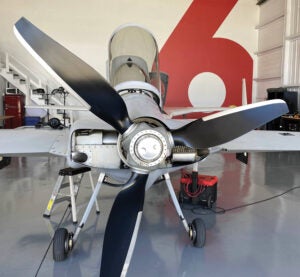
Catto Propellers
Building wood-core propellers encapsulated in structural composites, Catto Propellers has long offered two- and three-blade fixed-pitch props for Light Sport and Experimental aircraft. Craig Catto started his company in 1974, and after more than 45 years it continues to enjoy a reputation for dependable products. Electro-formed nickel leading edges are an option on all Catto props.
After extensive development, Catto is expanding its line to include constant-speed propellers. During the past year, production of the new three-blade CS prop began, which is targeted primarily for a few specific Lycoming O-540 installations.
Competition Aircraft, Inc.
Known for its UltraProp line of ground-adjustable composite propellers for a variety of purposes, Competition Aircraft has been in business since 1984. Originally targeted for ultralights, PPCs and trikes up to 50 hp, the basic UltraProp grew into the UltraProp II, adding blades to handle power ratings up to 25 hp per blade. Two-, three- and four-blade props are 66 inches in diameter, while five- and six-blade UltraProp IIs are 67 and 67.5 inches across.
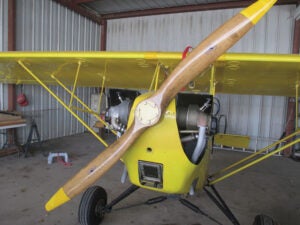
Culver Props
Culver propellers, formerly associated with Valley Engineering in Rolla, Missouri, since 2001, is now operating on its own since Valley Engineering has closed down. Alaina Lewis’ small factory has been relocated a few miles down the road and still turns out custom wood propellers for the Experimental aircraft market. They specialize in vintage profiles, popular with WW-I replica airplane owners. Maple, cherry, mahogany and birch woods are used; the two-blade fixed-pitch props are suitable for installations up to 300 hp.
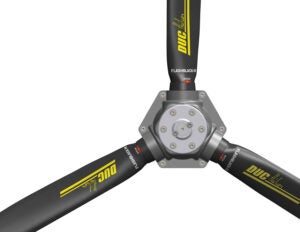
DUC Hélices
DUC Propellers USA in Sebring, Florida, opened in January 2019, a subsidiary of propeller and rotor maker DUC Hélices, which is located in Lyon, France. Its EASA-certified forged-carbon composite propellers are targeted for Experimental and ultralight aircraft of up to 180 hp, along with helicopter and gyrocopter rotors. DUC Hélices is now offering ground-adjustable, in-flight variable-pitch and constant-speed propellers.
DUC’s SWIRLBLACK-3 Hydraulic is termed the world’s lightest three-blade constant-speed hydraulic propeller, along with the FLASHBLACK Hydraulic, which comes as a two- or three-blade configuration with an Inconel leading edge. The company also offers 100% electric variable-pitch propeller systems with carbon/titanium blades, available in two-, three-, four- or five-blade models.
GSC Systems
For over 35 years, GSC Systems has been building wood props for the trike, powered parachute and paraglider market. It makes Tech II and Tech III ground-adjustable propellers in, logically enough, two- and three-blade configurations, as well as fixed-pitch models. Using clear Eastern maple, the CNC-shaped laminated props are coated with urethane, and an inlaid leading edge protection strip is available as an option.
Hoffman Propellers, GmbH
German-made Hoffman propellers are distributed by Steen Aero Lab in the U.S., among other outlets. Using wood-core blades coated in fiber-reinforced epoxy, a wide range of propeller styles are available in fixed-pitch, ground-adjustable or hydraulic constant-speed models. The Hoffman HO-V constant-speed is popular with aerobatic users. Hoffman Propellers has been in business for over 65 years.
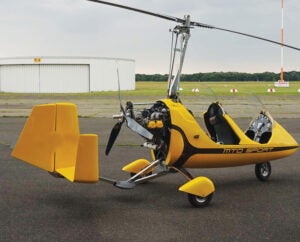
Ivoprop Corporation
The Ivoprop series of carbon fiber propellers take their name from company founder Ivo Zdarsky, who flew himself to freedom from communist Czechoslovakia in 1984. A unique embedded torsion bar allows electrical pitch adjustment at widely varying airspeeds in flight or manually on the ground. Available in Ultralight, Medium or Magnum types, in two- or three-blade configurations, the Medium series is for engines up to 150 hp and the Magnums can go up to 700 hp. A stainless steel leading edge protects the gelcoated blades.
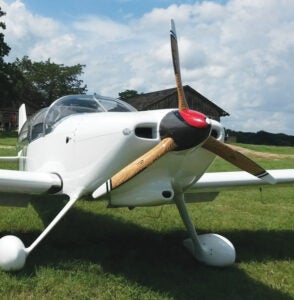
Performance Propellers USA, LLC
Still located in Donie, Texas, Performance Propeller’s Frank Johnson says he’s “still building the best wood props available.” Each of his props are custom made, and the customer is welcome to try their new propeller out to verify rpm, sending it back for tweaking if required. After that, the final finish and rainproof leading edge is installed. Built of laminated wood, two- and three-blade Performance Propellers are available exclusively for Experimental and aerobatic aircraft up to 300 hp.
Powerfin Propellers
Based in Hurricane, Utah, Powerfin builds a line of ground-adjustable carbon fiber propellers, primarily for Rotax engine installations in light Experimental and LSA aircraft. They’ll even match the blade color to your airplane’s paint, if you want. Two-blade to five-blade hubs are offered, and there are four different blade styles in the Powerfin series. It was “business as usual” when we spoke in late 2020, but the company spokesman hinted of new products under development, so keep an eye on their website.
Prince Aircraft Co.
Lonnie Prince offers an exclusive P-Tip end-plate design that, like a winglet, effectively increases the length of the blade; his 68-inch diameter P-Tipped propeller reportedly performs like a 72-inch unmodified prop. A scimitar blade shape adjusts pitch over a four-inch range as airspeed changes, Prince says. With 40-plus years of experience making wood/carbon fiber propellers, Prince Aircraft is known for its one-off prototyping work. As we interviewed Lonnie this year, he was working on a 30-foot eight-blade fan for a NASA wind tunnel project.
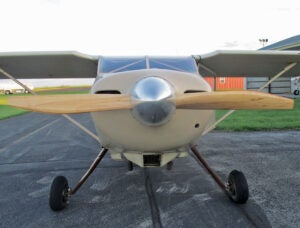
Edward Sterba Propeller Co.
Ed Sterba is still in the hand-carved wood propeller business, using maple, birch and cherry laminations with a urethane insert for leading edge protection. He does not have a website, but a web search turns up his basic information; he can be reached by email or phone. His Sweptback propellers are primarily designed for VW engine installations, which was his original focus, and the Race series are for Continentals and Lycomings used in RVs, Midget Mustangs and Long EZs, up to 200 hp. The latter have a curved leading edge and narrow tip profile.
Sterna Propellers
Florida-based Sterna Propellers started 25 years ago, building custom ground-adjustable composite-construction props for light Experimental aircraft. It also builds rotor blades. The propeller line targets a power range of 30 to 75 hp per blade. Sterna’s composite propeller is made with continuous high-performance pre-preg carbon fiber material. The blades are formed in one piece and are hollow inside with reinforced ribs. They also feature embedded nickel leading-edge protection and an aluminum shank.
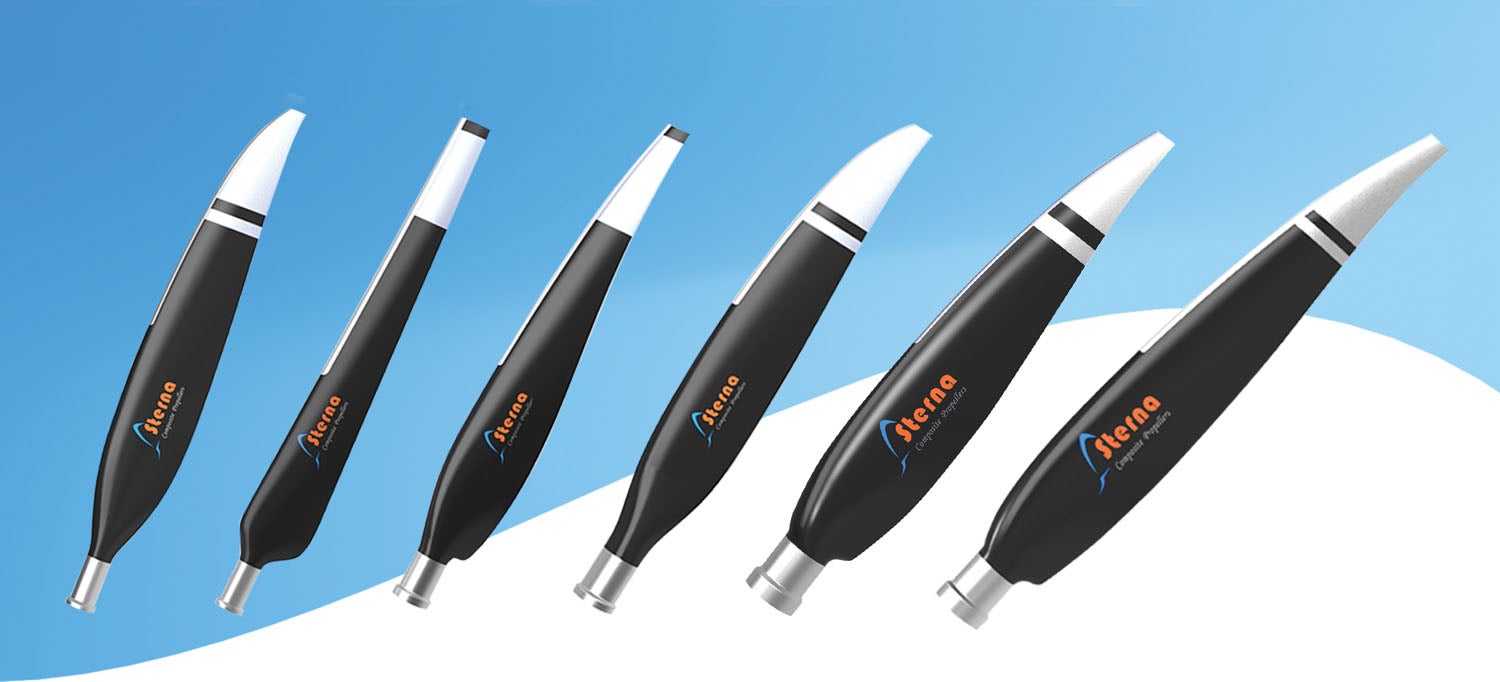
Warp Drive, Inc.
Based in Ventura, Iowa, since 1989, Warp Drive continues supplying its well-known ground-adjustable propellers with carbon fiber blades. It offers two- to six-blade hub designs, primarily for ultralights, powered parachutes, gyroplanes and trikes, as well as LSA and Experimental airplanes up to 180 hp.
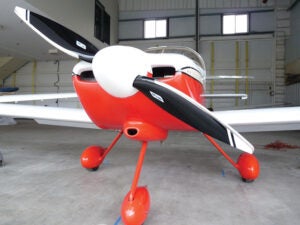
WhirlWind Propellers Corporation
WhirlWind Propellers of El Cajon, California, started in 1995, producing composite-blade constant-speed propellers, and 25,000 blades later it’s an established supplier of ground-adjustable two- and three-blade propellers for the Experimental and LSA market. Initially, WhirlWind’s propellers were built with a wood core and a composite overlay, but it now uses a patented all-composite closed-mold net-shape blade manufacturing process. The company also builds propellers for airboats, UAVs and wind tunnels.
For Lycoming 320/360 and Continental O-200 engines, WhirlWind offers two-blade ground-adjustable props, and it supplies two- and three-blade scimitar-shape styles for Rotax, Viking and ULPower engines. WhirlWind also has blades for the V530 hub on the Russian M-14P engines.
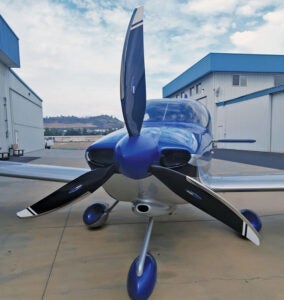
Whirl Wind Aviation, Inc.
A sister company to WhirlWind Propellers, Whirl Wind Aviation is based in Austinburg, Ohio, where it manufactures composite constant-speed propellers for Experimental aircraft. It offers 10 series of props to meet nearly every requirement, the latest being a new 300-72 three-blade propeller that weighs five pounds less than the 200-RV two-blade prop.
At just 36 pounds, the new 300-72 propeller is the lightest weight constant-speed propeller in its class. The 300-72 proprietary blade design features patented carbon fiber X-core thermoset composite construction, with an electroformed nickel leading edge for superior erosion resistance and FOD protection.
| Company | Founded | Certified/Experimental | Construction | Horsepower Range |
|---|---|---|---|---|
| Airmaster Propellers, Ltd. | 1999 | Experimental | Metal/composite | 80 to 200 hp |
| +64 9 833 1794 | ||||
| AXSport Aviation | n/a | Experimental | Carbon composite | 80 to 180 hp |
| +27 82 780 7111 | ||||
| Arrowprop Company, Inc. | 1961 | Experimental and ultralight | Wood and composite | Up to 100 hp |
| 405-279-3833 | ||||
| Bolly Aviation | 1978 | Experimental | Composite | 15 to 180 hp |
| +61 8 8380 8396 | ||||
| Catto Propellers | 1974 | Experimental and ASTM | Composite | 65 to 300 hp |
| 209-754-3553 | ||||
| Competition Aircraft, Inc. | 1984 | Experimental and ultralight | Composite | Up to 100 hp |
| 530-268-3048 or 888-634-9839 | ||||
| Culver Props | 1983 | Experimental | Wood | Up to 300 hp |
| 573-364-6311 | ||||
| DUC Propellers USA, Inc. | 1997 | Experimental | Composite | 100 to 160 hp |
| 863-991-0113 | ||||
| GSC Systems, Inc. | 1984 | Experimental | Wood | 35 to 115 hp |
| 250-549-3772 | ||||
| Hoffmann Propeller GmbH Co. KG | 1955 | EASA and Experimental | Wood/composite | Up to 500 hp |
| +49 0/8031-1878-0 | ||||
| Ivoprop Corporation | 1986 | Experimental | Composite | Up to 700 hp |
| 800-FOR-PROP or 562-602-1451 | ||||
| Performance Propellers USA, LLC | 2009 | Experimental | Wood | 50 to 300 hp |
| 713- 417-2519 | ||||
| Powerfin Propellers | 2008 | Experimental | Composite | Up to 160 hp |
| 435-627-0942 | ||||
| Prince Aircraft Company | 1979 | Experimental | Wood and composite | 100 to 300 hp |
| 419-877-5557 | ||||
| Edward Sterba Propeller Company | 1980 | Experimental | Wood | 30 to 200 hp |
| 941-778-3103 | ||||
| Sterna Aircraft | 1996 | Experimental | Composite | 30 to 450hp |
| 909-979-4535 | ||||
| UltraProp | ||||
| (see Competition Aircraft) | ||||
| Warp Drive, Inc. | 1989 | Experimental | Composite | Up to 180 hp |
| 641-357-6000 or 800-833-9357 | ||||
| WhirlWind Propellers Corp. | 1995 | Experimental | Composite | 80 to 400 hp |
| 619-562-3725 | ||||
| Whirl Wind Aviation, Inc. | 1995 | Experimental | Composite CS | 200 to 400 hp |
| 440-275-1540 | ||||
Photos: LeRoy Cook and courtesy of the manufacturers.














You missed out there excellent Woodcomp props from there Czech Republic. They’re popular in the UK, especially on Rotax aircraft. And I see that Sportair support them in the US
I have an Aerolux 3 blade composite on my Sky Raider II. Cannot find any website or referance to the manufacturer. Do you know if they are still in business??
E-Props, the worlds lightest. Carbon Titanium
45,000 blades a year, for 200 aircraft types and used by 31 manufacturers.
ASTM certified for SLA
Mainly currently servicing Rotax and 2 stroke engines.
http://www.e-props.fr
Some propellers are more eficiente than the others.